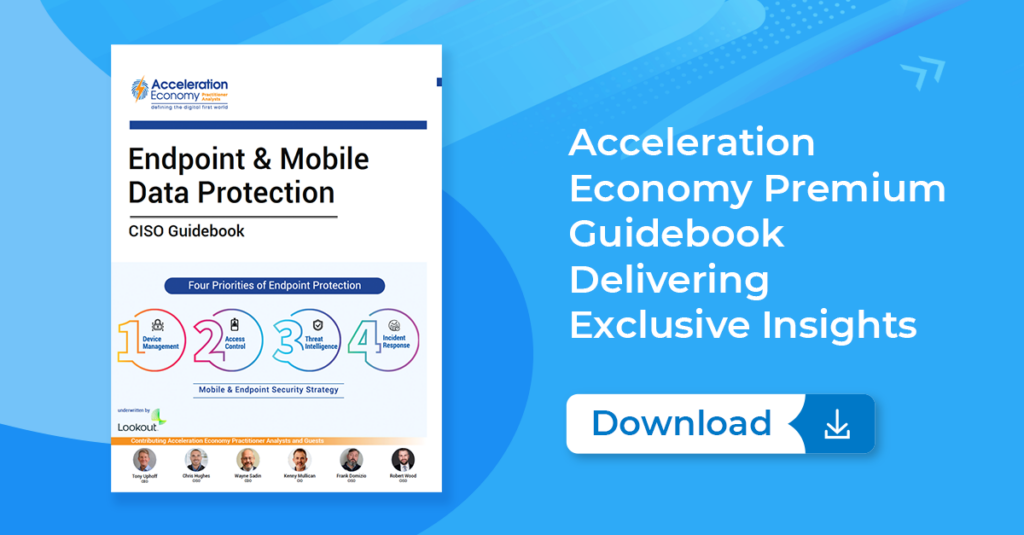As a manufacturing company CIO and an analyst practitioner for Acceleration Economy, I’m in a unique position to see firsthand the challenges confronting CIOs. While in many ways, the challenges don’t change much from year to year, in some years we experience the rise of new technology — such as generative artificial intelligence (AI) — that gains top-of-mind status. Here are the top five challenges that I see for myself and my CIO peers this year.
Ask Cloud Wars AI Agent about this analysis
- Adoption and Integration of AI: The rapid advancement of AI technologies poses both opportunities and challenges. CIOs must navigate decisions about investment levels, choose the right AI frameworks, and integrate AI into existing business processes. Moreover, upskilling the workforce to be proficient with AI tools and understanding the ethical implications of AI are significant challenges. I am as enthusiastic as anyone about the new GenAI technologies that have come to market over the past year. I spend a large portion of my time studying and experimenting with these tools to try to understand how best to utilize them for my company’s benefit. But it can be truly overwhelming due to the sheer number of companies and products involved. I’ve decided the best approach for my company is to start small with user-friendly, affordable offerings to test the waters and gradually move into bigger projects. Each CIO will need to come up with the best strategy for their company, depending on staff and skill level.
- Cloud Migration and Management: The shift to cloud computing continues to be a strategic focus. Moving legacy systems to the cloud can be complex and costly. CIOs must balance the benefits of cloud computing against these challenges, including managing the higher-than-expected costs of cloud resources and ensuring data security in a cloud environment. When my company moved from on-premises enterprise resource planning (ERP) to the cloud, I was surprised by the increase in cost. There were so many services that no one had ever mentioned during the sales process, including cloud storage, additional virtual machines, data transfer fees, and cybersecurity for cloud data. The application licenses, implementation, and consulting costs are only the beginning. Additionally, cloud infrastructure requires skills and staffing that can be very different from managing on-premises systems. It’s important to get a good understanding of all these changes before launching a major cloud migration initiative.
- Cultural Transformation and Remote Work: Post-pandemic, the IT work culture is undergoing significant changes. CIOs face the challenge of creating a flexible work environment that caters to both remote and on-site staff, particularly in sectors like manufacturing. Balancing the expectations of a distributed workforce while maintaining productivity and collaboration is a key concern. In my company, we have settled on a hybrid schedule where we are in the office three days and we work from home two days a week. This provides a nice workable balance, but even this can be a hard sell when acquiring new talent. If a qualified applicant lives in another city, then any in-office requirement might mean moving, with all the overhead that entails. So if another company offers them a full-remote position, it could be difficult to compete. Even people who do live in the same city might prefer to work from home. Finally, we have to contend with the possibility that our current employees might be offered positions that allow fully remote work and, if the pay raise is enough, they might be prepared to leave. It’s a tough situation for employers, and we have to work through it to find a balance that we can afford, while keeping our organizations appropriately staffed.
- Aligning IT with Business Expectations: As companies become more tech-savvy, they demand more complex and innovative IT projects. CIOs are challenged to meet these business demands within realistic timelines and budgets. This includes managing expectations about the capabilities of technology, resource allocation, and project prioritization. There was a time when information technology was seen as a rather arcane topic to most business leaders, so they were content to leave it in the hands of the IT department. But now they have seen the potential of this technology to gain a competitive advantage and to engage with customers in ways never before possible. This is a good thing, as the value of IT leaders and their teams is more obvious, but the understanding of the budget required to harness these new initiatives hasn’t yet caught up to the desire to implement them. CIOs must find a way to show value while also helping business leaders see and understand those resource requirements.
- Cybersecurity: CIOs must deal with the complexity of protecting against sophisticated ransomware, phishing attacks, and other forms of cybercrime. Staying ahead of these threats requires continuous investment in advanced security technologies, employee training, and the development of robust incident response plans. Recently, I heard about two incidents that hit close to home. One was a healthcare company that was the victim of a ransomware attack. It affected thousands of hospitals and healthcare providers. I was unable to make appointments or access any of my medical records online for about a month. Another company in my area was hit with ransomware that encrypted all of their files. They paid the ransom of $1 million, but still didn’t get back any of their files. The threat landscape is constantly changing, so we never arrive at “good enough” security. I’m sure those companies thought they were doing all they could to keep their data secure.

All of these challenges are interconnected and require a strategic approach from CIOs. They must not only be technologically adept but also possess strong leadership and communication skills to navigate these complex issues successfully. I will be relying on guidance and advice from my peer groups, as well as valuable resources like Acceleration Economy, to help me establish and manage my 2024 priorities.











